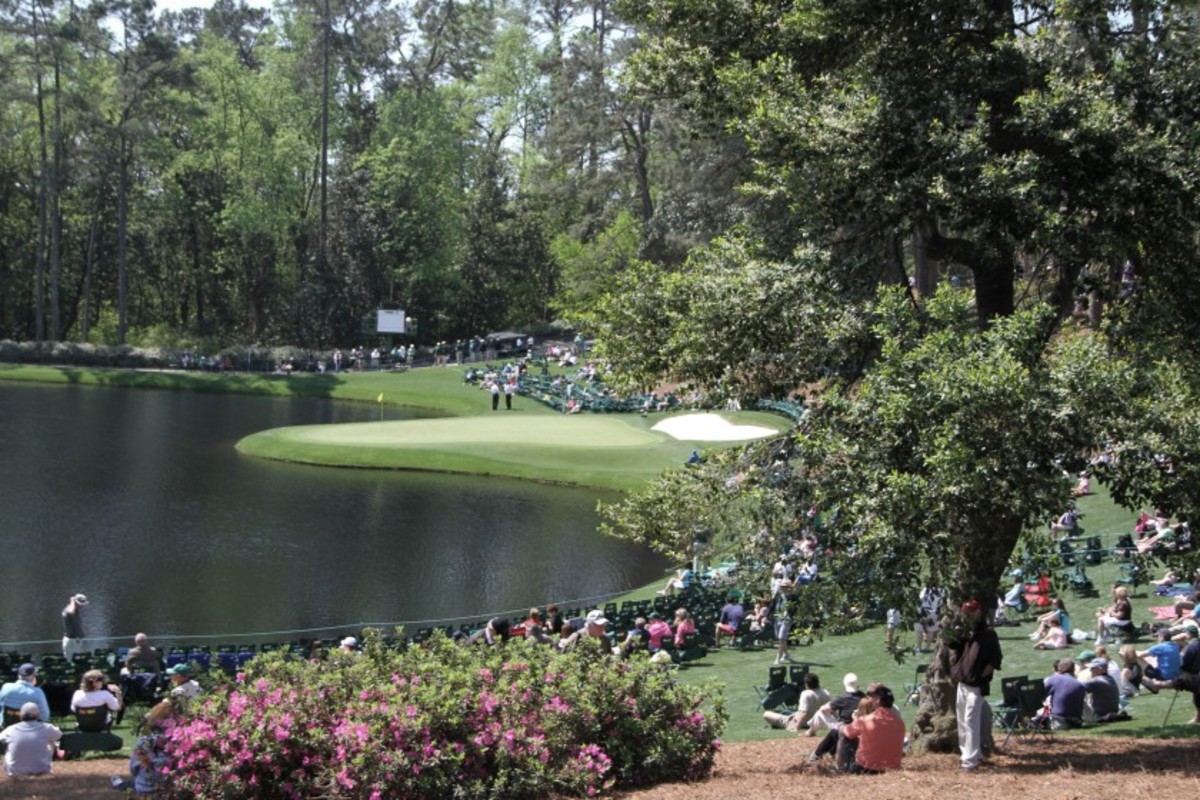What if Alister MacKenzie or Robert Trent Jones Sr. had designed Augusta National’s Par-3 Course?

Paul Azinger once called the Par-3 Course at Augusta National Golf Club, “the best golf course in the world.” The former PGA Championship winner and Ryder Cup captain-turned broadcaster is certainly entitled to his opinion, misguided as it may be.
Yet, on a sunny, spring afternoon, with the ponds glistening and the azaleas blazing, he’s not that far off. There’s no mystery behind its appeal. Augusta National’s Par-3 Course provides exquisite tranquility, a kaleidoscope of colors and a delightful complement to a round on the championship course. However, it’s not exactly an architectural marvel. Yet, it could have been — twice.
Sadly, the fun-filled, traditional Par-3 Contest is on hiatus for the second consecutive year due to COVID concerns, but it’s guaranteed that thoughts will turn to the course and event come midweek. It’s also an opportunity for design and history connoisseurs to contemplate how the most famous par-3 course in the world came about, and to wonder: What if either Alister MacKenzie or Robert Trent Jones Sr. had been the architect?
Tucked onto 22 acres of the northeast corner of the Augusta National Golf Club property, the Par-3 Course plays as nine holes, par-27, 1,060 yards. Architect George Cobb created the little layout, with the help of co-founders Clifford Roberts and Bobby Jones in 1958. Two years later, it played host to the inaugural Par-3 Contest, won by Sam Snead.

In 1986, Tom Fazio crafted two new holes — Nos. 8 and 9 — that play directly over Ike’s Pond, named for former U.S. President and club member Dwight D. Eisenhower. The current course took old holes 3 through 9 and renumbered them as 1 through 7. Cobb’s original first two holes now serve as prime seating areas during the Par-3 Contest. As actual golf holes, they haven’t disappeared entirely, but they’re seldom used.
Architecturally though, there’s a sameness to all the greens and their surrounds. The putting surfaces are tiny, averaging 2,400 square feet and while there is some variety in contouring, they’re predominantly sloped severely back to front. If you’re seeking imaginative design and creative contouring, you’ll have to venture elsewhere.
RELATED:Masters scraps Par 3 Contest again
Start with Bill Coore and Ben Crenshaw’s Bandon Preserve, Gil Hanse’s The Cradle at Pinehurst or Tom Doak’s The Mulligan at Ballyneal. As Doak himself said of Augusta National’s Par-3 Course, “There is not a lot of call for creative shotmaking here: you can’t recover from water hazards, no matter how pretty they look on the Wednesday night highlights show.”
Had plans come to fruition, the Wednesday event could have unfolded on a MacKenzie original short course. Early in 1932, MacKenzie proposed what he called an “approach and putt” course of nine holes, measuring just over 400 yards, but Bobby Jones didn’t bite.
MacKenzie later submitted a routing for a longer version, this time 18 holes and 2,460 yards, playing to nine huge double greens, with sizes ranging from 7,500 square feet to nearly 15,000 square feet. There were to have been no sand bunkers — just the contours and the existing creek to provide interest and variety. Hole lengths ranged from 60 to 190 yards. That expanded layout never blossomed either, though most speculate that the club simply didn’t have the money to pay for it in those dark economic days of the early 1930s.
AUGUSTA NATIONAL RECONSIDERS PAR-3 COURSE
By 1958, however, Augusta National had plenty of cash and Roberts revisited the short course idea. This time Bobby Jones was on board. So with the stature of Augusta National, why hire Cobb as consulting architect and as designer of the Par-3 Course? Why not hire Robert Trent Jones Sr., the preeminent architect of the day, and the man who not only successfully collaborated with Bobby Jones on Atlanta’s acclaimed Peachtree Golf Club, but who also authored the well-received changes to Augusta National within the past decade?
It doesn’t take a private investigator to read between the lines. Jones Sr. was instrumental in creating the new par-3 16th on the big course in 1947, replacing another par-3 that was considered too easy and too similar to its exemplary 12th hole. The new hole was a smash, with its angled, kidney bean-shaped green, lovely pond and amphitheater setting. Then came the credit issue.
“My trouble with (Clifford) Roberts came after the hole was finished,” wrote Jones Sr. in his 1988 book, Golf’s Magnificent Challenge. “He told the public that Bob Jones, not Trent, had done the remodeling, that I had nothing to do with it. Well, Bob certainly had input, but the design was mine.”
Roberts did make attribution in his 1976 book, The Story of the Augusta National Golf Club, but credit was half-hearted at best, and untrue at worst. He wrote: “Bob Jones designed a new arrangement (for the 16th) … The golf course architect, Robert Trent Jones, implemented on a volunteer basis the plan conceived by Bob Jones. Trent also directed, at Bob’s request, the building of a bunker on the left front of the first green. This was Trent’s final contribution to the golf course as it is today.”
Roberts gave Jones Sr. no credit at all for dramatically altering the par-4 11th hole in 1950, while Trent Jones took full kudos. Without doubt, a schism over receiving credit for who did what led Augusta National to find a new architect — Cobb — in the late 1950s. He wasn’t the most sophisticated designer, but he was the right regional architect at the right time to assist with the South’s greatest club.
Sixty-three years after its debut, the Augusta National Par-3 Course remains a much-loved, gorgeous, if architecturally vanilla gem. One can’t help but fantasize about what MacKenzie’s courses could have been, or perhaps how different a Jones Sr. creation would have appeared.
